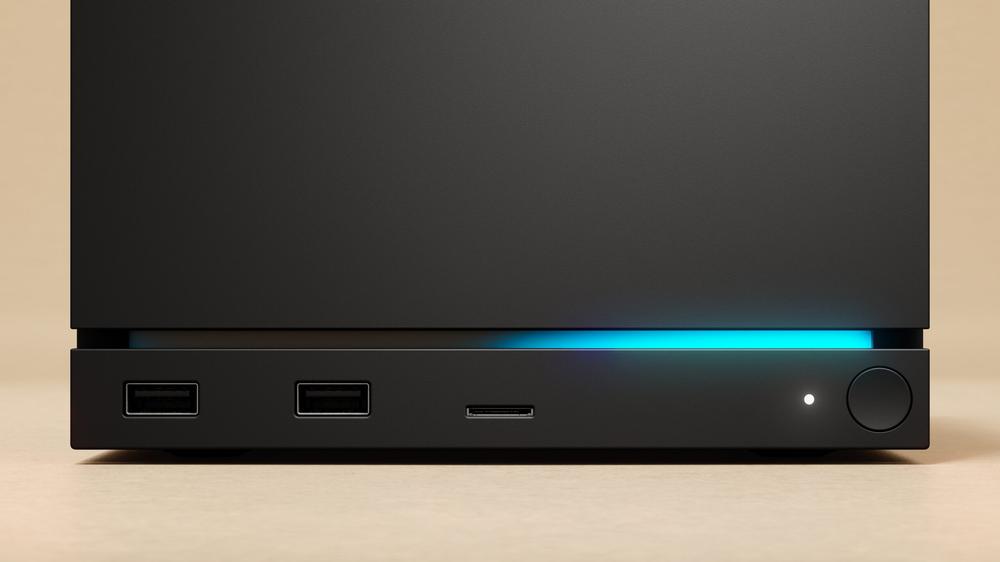If you ask random gamers what price they think Valve will charge for its newly announced Steam Machine hardware, you’ll get a wide range of guesses. But if you ask the analysts who follow the game industry for a living the same question… well, you’ll actually get the same wide range of (somewhat better-informed) guesses.
At the high end of those guesses are analysts like F-Squared‘s Michael Futter, who expects a starting price of $799 to $899 for the entry-level 512GB Steam Machine and a whopping $1,000 to $1,100 for the 2TB version. With internal specs that Futter says “will rival a PS5 and maybe even hit PS5 Pro performance,” we can expect a “hefty price tag” from Valve’s new console-like effort. At the same time, since Valve is “positioning this as a dedicated, powerful gaming PC… I suspect that the price will be below a similarly capable traditional desktop,” Futter said.
DFC Intelligence analyst David Cole similarly expects the Steam Machine to start at a price “around $800” and go up to “around $1,000” for the 2TB model. Cole said he expects Valve will seek “very low margins” or even break-even pricing on the hardware itself, which he said would probably lead to pricing “below a gaming PC but slightly above a high-end console.”
A loss leader?
At the other end of the spectrum, Superdata Research founder and SuperJoost newsletter author Joost Van Dreunen predicted the entry-level Steam Machine could come in as low as $549, rising to $749 for the 2TB version (plus an additional $50 for bundles including a Steam Controller).
To Van Dreunen, Valve’s unique position as a private company with a loyal fan base means it can “price its hardware to hit its own strategic sweet spot rather than mirror the competition.” And in this case, he said, that could mean taking a “modest” loss on the hardware as a way to get more gamers invested in SteamOS.
“Just like Sony and Microsoft, the real money isn’t in the box, it’s in the ecosystem you enter once you buy it,” Van Dreunen said. “To me the question isn’t whether Valve can afford to eat margin. It’s whether they want the SteamOS footprint to grow fast enough to justify it. … Strategically, this is about expanding the platform, not squeezing the hardware.”
Pitchbook‘s Eric Bellomo agreed that Valve “could use this hardware as a loss leader to expand the Steam ecosystem.” At the same time, he noted that “Sony’s adoption of premium pricing underscores the need to maintaining profit margins and manage supply chain inflation, though Valve has breathing room as a private company.” In the end, Bellomo expects the Steam Machine’s “modestly dated GPU/processors” will lead to “an upper mid-range [pricing] strategy, above the [$400 to $600] Xbox [Series X/S], but below the [$750] PS5 Pro.”
TechInsights Senior Analyst James Sanders, on the other hand, argued that “it may not be beneficial for Valve to subsidize hardware sales.” That’s in part because a heavily subsidized Steam Machine might end up “discourag[ing] OEMs from [using] SteamOS to offer their own Steam Machines,” which Valve has suggested it would be open to. And the extra software revenue from new Steam Machine customers might be somewhat muted if those owners simply use the device to play their Steam backlogs on the TV, he argued.
Even Futter said his expectations for a relatively high-priced Steam Machine could change if Valve decides to use aggressive pricing to take on the console makers directly. “If they’re looking to expand the market, pricing will have to be at or below a PS5 Pro / Xbox Ally X,” he said.”[But] if this is Valve catering to its most fervent players, they don’t need to shave as much off to make this a loss leader.”
Known unknowns
Part of the reason even informed analysts are having trouble agreeing on a price range for the Steam Machine is the volatile and unpredictable market for components like RAM and high-speed storage. DFC’s Cole said that volatility “is likely why Valve has not yet named a price. If storage costs rise before launch, Valve may be forced to increase price.”
The size of that potential increase may also depend in part on how long Valve has actually been gearing up for the upcoming Steam Machine launch. “The RAM and SSD pricing is Valve’s biggest challenge, near-term,” TechInsights’ Sanders said. “If the manufacturing ramp-up started in [the third quarter of 2025], they’d be in a better position; if it started in [the fourth quarter], their component costs are likely significantly higher.”
Regardless, Futter thinks that “solid state memory pricing will create a price floor that will still induce sticker shock for some excited by [Valve’s announcement].” But Futter also thinks that sticker shock might be mitigated in the US if Valve and the rest of the tech industry receive some relief from Donald Trump’s tariffs. “If the Supreme Court smacks down the tariffs, I suspect those prices may come in lower,” he said.
TechInsights’ Sanders suspects that Valve is “likely working with a contract manufacturer with production facilities outside of China, which would reduce—but not eliminate—the impact of tariffs.” DFC’s Cole put a more precise number on that impact, saying that tariffs could lead to “a $50 to $100 price variance” in the US, unless “Valve absorbs the cost” in the form of increased losses. PitchBook’s Bellomo cited the Yale Budget Lab in predicting “a mid-teens [percentage] short-term price increase [over a world without tariffs], falling to the mid-single digits over the longer term.”
However, Van Dreunen noted that Trump’s tariffs can’t completely throw off Valve’s worldwide plans for the Steam Machine launch. “The US isn’t the whole story,” he said. “Big markets like China, Russia, Germany, and the United Kingdom sit outside the current tariff drag, which means Valve can offset softer US demand with stronger international uptake. Tariffs might make the first impression in the US a little sluggish, but they don’t meaningfully change Valve’s global math.”
In the end, Bellomo said the price Valve ends up charging will depend on “brand loyalty, software lock-in effects, and the ability to absorb supply chain disruptions while increasing production.” And Futter said that, while the lack of price information might be frustrating for players, holding back public pricing details for now is probably the right move from a corporate standpoint
“Letting the desire to own one blossom before the sticker shock, [which] is much smarter than revealing the price and driving people away before they even consider their individual use cases,” he said. “Let people get excited about the concept before revealing the price.”

 The Running Man Post-Credits Check-In (No Spoilers)
The Running Man Post-Credits Check-In (No Spoilers)